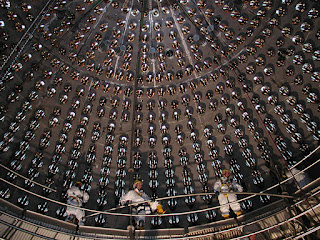Topics: High Energy Physics, Neutrinos, Particle Physics, STEM, Theoretical Physics
The first confirmed sightings of antineutrinos produced by radioactive decay in the Earth's mantle have been made by researchers at the Borexino detector in Italy. While such "geoneutrinos" have been detected before, it is the first time that physicists can say with confidence that about half of the antineutrinos they measured came from the Earth's mantle, with the rest coming from the crust. The Borexino team has also been able to make a new calculation of how much heat is produced in the Earth by radioactive decay, finding it to be greater than previously thought. The researchers say that in the future, the experiment should be able to measure the quantities of radioactive elements in the mantle as well.
According to the bulk silicate Earth (BSE) model, most of the radioactive uranium, thorium and potassium in our planet's interior lies in the crust and mantle. Accounting for about 84% of our planet's total volume, the mantle is the large rocky layer sandwiched between the crust and the Earth's core. Heat flows from the interior of the Earth into space at a rate of about 47 TW, but one of the big mysteries of geophysics is how much of this heat is left over from when the Earth formed, and how much comes from the radioactive decay chains of uranium-238, thorium-232 and potassium-40.
Physics World:
Physicists isolate neutrinos from Earth's mantle for first time, Hamish Johnston

Comments